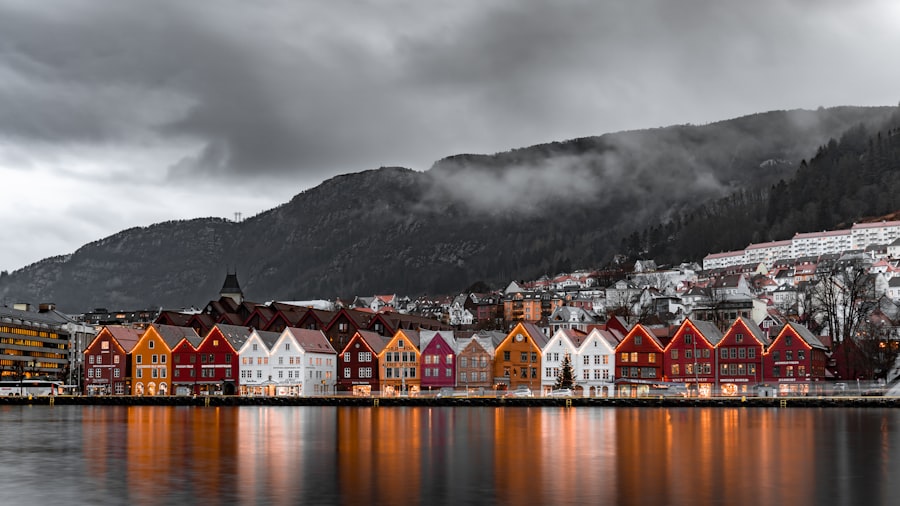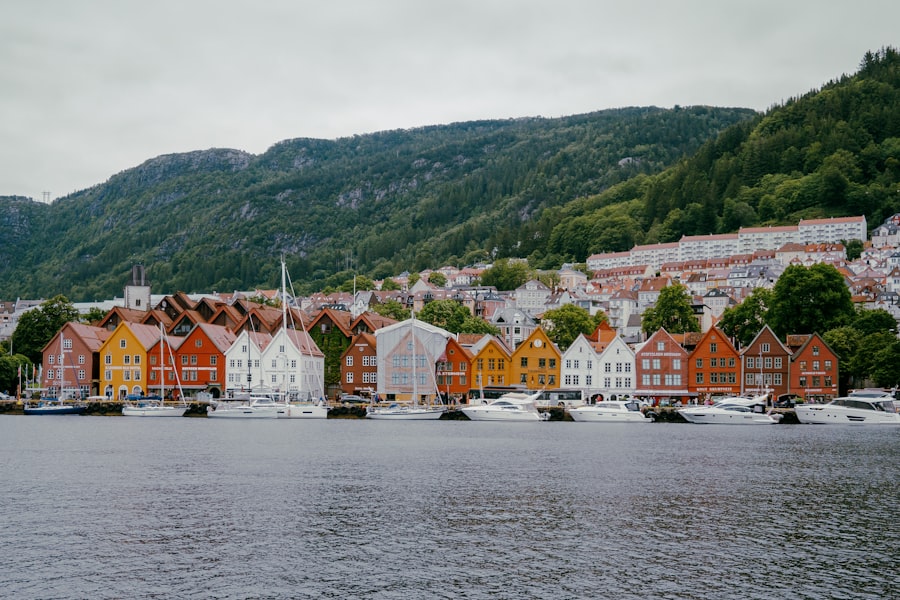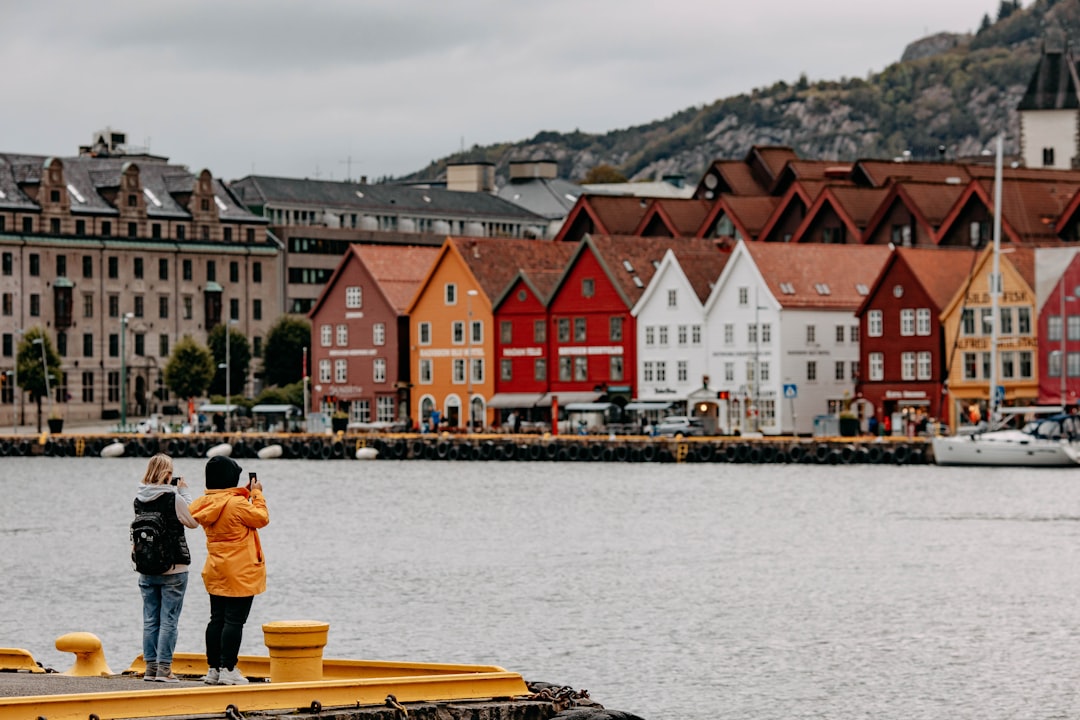As the festive season approaches, the air in Norway becomes imbued with the rich aromas of traditional Christmas fare. Norwegian Christmas food, or “julemat,” is a delightful tapestry of flavours and textures that reflect the country’s cultural heritage and regional diversity. The culinary traditions surrounding Christmas in Norway are steeped in history, often passed down through generations, and they play a significant role in family gatherings and celebrations.
From hearty dishes to sweet treats, the festive table is a feast for the senses, inviting both locals and visitors to partake in the joyous spirit of the season. The essence of Norwegian Christmas food lies not only in its taste but also in the stories and memories that accompany each dish. Families gather to prepare these meals together, creating a sense of unity and warmth that is central to the holiday spirit.
As we delve into the various components of a traditional Norwegian Christmas feast, we will explore the significance of each dish, the regional variations that enrich the culinary landscape, and how these traditions continue to evolve in modern times. Your journey to a smooth relocation starts here. Talk one-on-one with a Norway Relocation specialist and turn your plan into a reality.
Summary
- Norwegian Christmas food is known as ‘Julemiddag’ and is a significant part of the holiday season.
- Traditional Norwegian Christmas dishes include ribbe (pork ribs), pinnekjøtt (dried and salted lamb ribs), and lutefisk (dried whitefish).
- Regional variations in Norwegian Christmas food can be seen in the use of different meats and fish, as well as the types of bread and pastries.
- Fish plays a significant role in Norwegian Christmas food, with dishes like lutefisk and rakfisk being popular choices.
- Root vegetables, such as potatoes, carrots, and rutabaga, are important components of Norwegian Christmas food, often served as accompaniments to the main dishes.
Traditional Norwegian Christmas Dishes
At the heart of any Norwegian Christmas celebration is a selection of traditional dishes that embody the spirit of the season. One of the most iconic is “ribbe,” or roasted pork belly, which is often served with crispy crackling and accompanied by sauerkraut and potatoes. This dish is a staple in many households and is cherished for its rich flavour and satisfying texture.
Another beloved dish is “lutefisk,” a unique preparation of dried fish that has been soaked in a lye solution before being rehydrated. While it may not be to everyone’s taste, lutefisk holds a special place in Norwegian hearts, often served with white sauce, peas, and potatoes. In addition to these mainstays, “pinnekjøtt,” or salted and dried lamb ribs, is another traditional dish that graces many Christmas tables.
The meat is typically steamed over birch branches, imparting a distinct flavour that is both earthy and aromatic. Served with swede (rutabaga) mash, pinnekjøtt is a hearty option that reflects Norway’s agricultural roots. Each of these dishes tells a story of tradition and celebration, making them integral to the festive experience.
Regional Variations in Norwegian Christmas Food

Norway’s diverse geography and cultural influences have given rise to a variety of regional variations in Christmas food. In the northern regions, for instance, you might find “klippfisk,” or dried and salted cod, which has been a staple for centuries due to its preservation qualities. This dish is often prepared with a rich sauce and served alongside root vegetables, showcasing the resourcefulness of coastal communities.
In contrast, southern Norway tends to favour “julepølse,” a spiced Christmas sausage made from pork and beef, which is often served alongside ribbe or pinnekjøtt. The variations extend beyond main dishes; for example, in some areas, you might encounter “julegrøt,” a rice porridge traditionally served with cinnamon and sugar, while others may opt for “riskrem,” a creamy rice pudding topped with berry sauce as a festive dessert. These regional differences not only highlight the local ingredients available but also reflect the unique customs and traditions that have developed over time.
As families gather around their tables, they often incorporate these regional specialties into their celebrations, creating a rich tapestry of flavours that honour both heritage and locality.
The Role of Fish in Norwegian Christmas Food
Fish plays a pivotal role in Norwegian cuisine throughout the year, but its significance becomes particularly pronounced during the Christmas season. The long-standing tradition of consuming fish during this time can be traced back to Norway’s coastal geography and fishing heritage. Dishes such as “lutefisk” and “klippfisk” are not merely culinary choices; they are emblematic of Norway’s deep connection to the sea.
Lutefisk, despite its polarising nature, remains a cherished part of many families’ Christmas traditions. The preparation process itself is an art form, requiring patience and skill to transform dried fish into a delicacy that can be enjoyed during festive gatherings. Similarly, klippfisk serves as a reminder of Norway’s maritime history, showcasing how communities have relied on fish as a source of sustenance for generations.
Moreover, fish dishes are often accompanied by traditional sides such as boiled potatoes and vegetables, creating a balanced meal that reflects Norway’s commitment to wholesome ingredients. As families come together to share these meals, they not only celebrate their culinary heritage but also honour the natural resources that have sustained them for centuries.
The Importance of Root Vegetables in Norwegian Christmas Food
Root vegetables hold a special place in Norwegian Christmas cuisine, serving as essential accompaniments to many festive dishes. Swede (rutabaga), carrots, and potatoes are commonly featured on the holiday table, providing both flavour and nutrition. These hardy vegetables thrive in Norway’s cold climate and have been cultivated for generations, making them integral to traditional recipes.
Swede mash is particularly popular when served alongside pinnekjøtt or ribbe, offering a sweet contrast to the rich flavours of the meat. The preparation of root vegetables often involves simple techniques that allow their natural sweetness to shine through. Boiling or mashing them with butter creates comforting side dishes that complement the heartiness of main courses.
In addition to their culinary significance, root vegetables also represent the agricultural heritage of Norway. They are often harvested in late autumn and stored for winter use, symbolising resilience and resourcefulness during the harsh months ahead. As families gather around their festive tables adorned with these vibrant vegetables, they celebrate not only their flavours but also their connection to the land.
The Significance of Meat in Norwegian Christmas Food

Meat takes centre stage in many Norwegian Christmas meals, reflecting both tradition and celebration. The choice of meat varies by region and family preference but often includes pork, lamb, or beef. Ribbe and pinnekjøtt are perhaps the most iconic examples, each offering distinct flavours that evoke warmth and festivity.
The preparation of these meats is often steeped in ritual; families may spend hours marinating or slow-roasting their chosen cuts to achieve the perfect balance of tenderness and flavour. The crackling skin of ribbe is particularly prized, with many families vying for the crispiest piece at the table. Meanwhile, pinnekjøtt’s unique steaming method over birch branches adds an aromatic quality that enhances its savoury profile.
Beyond their deliciousness, these meats carry cultural significance as well. They represent abundance and celebration during a time when families come together to share meals and create lasting memories. The act of preparing and serving these dishes fosters a sense of community and belonging that is central to the holiday spirit.
The Role of Bread and Pastries in Norwegian Christmas Food
No festive meal would be complete without an array of breads and pastries that add both texture and sweetness to the table. In Norway, traditional breads such as “julebrød,” a spiced Christmas bread often studded with raisins or nuts, are commonly enjoyed during this season. Its warm spices evoke feelings of comfort and nostalgia, making it a beloved addition to breakfast or as an accompaniment to festive meals.
Pastries also play an important role in Norwegian Christmas celebrations. “Kransekake,” a towering almond cake shaped into rings, is often featured at special occasions such as weddings and Christmas alike. Its delicate sweetness pairs beautifully with coffee or mulled wine, making it a delightful treat for guests.
Moreover, many families engage in baking sessions leading up to Christmas, creating an atmosphere filled with laughter and joy as they prepare these sweet delights together. The act of sharing baked goods not only enhances the festive spirit but also strengthens familial bonds as recipes are passed down through generations.
Desserts and Sweets in Norwegian Christmas Food
The sweet finale of any Norwegian Christmas feast is marked by an array of desserts that tantalise the taste buds. One popular choice is “riskrem,” a creamy rice pudding made from leftover rice porridge mixed with whipped cream and sugar. Topped with berry sauce or cinnamon sugar, riskrem is often served with a hidden almond inside; tradition dictates that whoever finds it will enjoy good luck in the coming year.
Another cherished dessert is “pepperkaker,” or gingerbread cookies, which are intricately decorated with icing and enjoyed throughout the holiday season. These spiced cookies are not only delicious but also serve as a canvas for creativity as families engage in cookie decorating activities together. In addition to these treats, marzipan figures shaped like animals or festive symbols are also popular during this time.
These sweet confections add colour and whimsy to holiday celebrations while providing an opportunity for families to indulge their sweet tooth.
Beverages and Drinks in Norwegian Christmas Food
Beverages play an essential role in enhancing the festive atmosphere surrounding Norwegian Christmas meals. Traditional drinks such as “gløgg,” a spiced mulled wine infused with cinnamon, cloves, and citrus peel, are commonly enjoyed during this time. Served warm with almonds and raisins floating on top, gløgg creates an inviting ambiance that encourages conviviality among guests.
In addition to gløgg, families may also serve “juleøl,” or Christmas beer, which is brewed specifically for the holiday season. This rich amber ale often features spices such as cardamom or ginger, complementing the flavours found in traditional dishes while adding depth to the overall dining experience. For those who prefer non-alcoholic options, “julebrus,” a festive soft drink available in various flavours such as raspberry or cola, provides a refreshing alternative that captures the essence of celebration without alcohol.
Modern Influences on Norwegian Christmas Food
While traditional dishes remain at the forefront of Norwegian Christmas celebrations, modern influences have begun to shape how these meals are prepared and enjoyed. Globalisation has introduced new ingredients and culinary techniques that have found their way into festive menus across Norway. For instance, fusion dishes combining traditional elements with international flavours have become increasingly popular among younger generations seeking innovation while honouring their heritage.
Additionally, dietary preferences such as vegetarianism or veganism have prompted some families to adapt traditional recipes to accommodate diverse palates. This evolution reflects broader societal changes while still maintaining respect for cultural traditions. Despite these modern influences, many families continue to uphold age-old customs by gathering together to prepare traditional dishes from scratch.
This blend of old and new creates a dynamic culinary landscape where cherished recipes coexist alongside contemporary interpretations.
What Makes a ‘Julemiddag’ Across Norway
A ‘julemiddag,’ or Christmas dinner, encapsulates the essence of Norwegian culture through its rich tapestry of flavours and traditions. From hearty meats like ribbe and pinnekjøtt to sweet treats like riskrem and pepperkaker, each dish tells a story steeped in history while fostering connections among family members during this special time of year. As we explore the various components that make up this festive feast—ranging from fish to root vegetables—we gain insight into how geography influences culinary practices across regions while highlighting shared values rooted in community bonding.
Ultimately, what makes a ‘julemiddag’ truly special lies not only within its delicious offerings but also within the love shared among those gathered around the table—a celebration of heritage intertwined with modern influences that continue shaping Norway’s culinary landscape today. For those looking to immerse themselves further into Norwegian culture—perhaps even considering relocation—the Norway Relocation Group can provide invaluable assistance throughout your journey. Their expertise can help you navigate everything from housing arrangements to understanding local customs.
As you settle into your new life in Norway, consider enrolling in one of the Norwegian courses offered at NLS Norwegian Language School in Oslo. These courses will not only enhance your language skills but also deepen your understanding of Norway’s rich traditions—including its beloved Christmas cuisine—allowing you to fully embrace your new home during this magical time of year.
Register for a Norwegian class at the NLS Norwegian Language School now!

